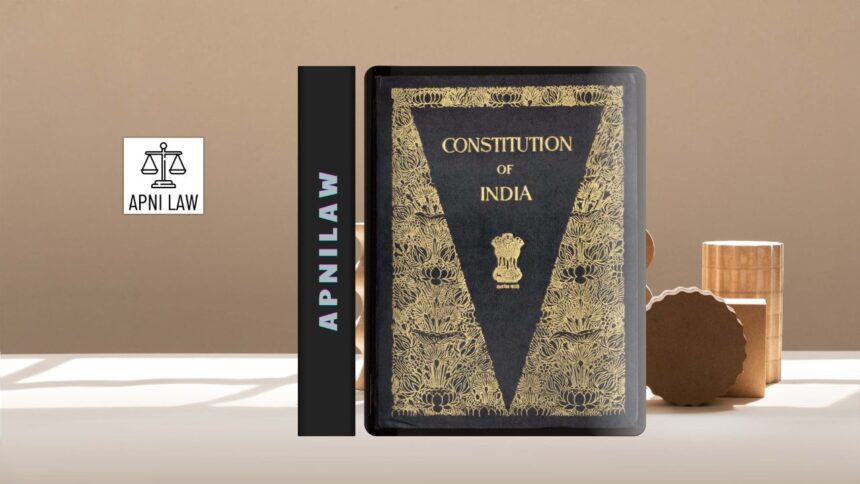Introduction
The adoption of the Indian Constitution on 26 November 1949 was one of the most defining moments in India’s modern history. It was the day when the Constituent Assembly, after nearly three years of debates, revisions, and drafting, approved the Constitution that would guide the world’s largest democracy. This enactment was not only the birth of a legal document but also the outcome of centuries of struggle for justice, equality, and self-rule. By adopting the Constitution, India took its first step as a sovereign republic with a vision of liberty, equality, fraternity, and justice. To understand why this date is celebrated with pride, we must revisit the historical journey that led to the adoption and explore its continuing significance in India’s democratic life.
The Road to Adoption
The Constituent Assembly held its first session on 9 December 1946. Under the leadership of Dr. Rajendra Prasad as its President, the Assembly set out on the challenging task of giving independent India a framework of governance. The members recognized that India’s diversity in language, culture, and religion demanded a constitution that could balance unity with plurality.
The Drafting Committee, chaired by Dr. B.R. Ambedkar, bore the responsibility of preparing the document. However, its strength came from the collective will of the Assembly. Leaders like Jawaharlal Nehru, Sardar Vallabhbhai Patel, Alladi Krishnaswami Ayyar, and others contributed immensely. They engaged in detailed discussions about federalism, fundamental rights, minority protection, and the balance of power between different branches of government. Each provision underwent intense scrutiny, often followed by amendments to ensure consensus.
By November 1949, the Constituent Assembly had debated for 165 days spread over three years. It examined more than 2,000 amendments before finalizing the draft. On 26 November 1949, after years of careful work, the Assembly formally adopted the Constitution, giving India its supreme law.
Why 26 November 1949 Was Historic
The decision to adopt the Constitution on 26 November 1949 carried deep symbolic meaning. It was not merely a procedural date but a moment that captured the aspirations of millions of Indians. By this act, the Assembly declared that India would no longer rely on colonial legal systems. Instead, it would govern itself through a document created by its own representatives.
The Constitution in its original form contained 395 Articles and 8 Schedules, making it one of the lengthiest constitutions in the world. Its adoption represented a conscious choice to address India’s complexity in detail, leaving no room for ambiguity in governance.
It also highlighted India’s commitment to democracy at a time when many newly decolonized nations were drifting towards authoritarianism. The adoption affirmed that India’s future would rest on the principles of parliamentary democracy, fundamental rights, and federalism.
Why It Came into Force on 26 January 1950
Although adopted on 26 November 1949, the Constitution came into force on 26 January 1950. The framers deliberately chose this date to honor the memory of the freedom struggle. On 26 January 1930, the Indian National Congress had declared Purna Swaraj or complete independence from British rule. By enforcing the Constitution on the same date, the Assembly connected independent India’s birth to that earlier pledge of sovereignty.
On 26 January 1950, India officially became a sovereign, democratic republic. Dr. Rajendra Prasad took oath as the first President of India, and the Constituent Assembly transformed itself into the provisional Parliament until general elections were held in 1952. This date continues to be celebrated as Republic Day every year.
Dr. B.R. Ambedkar’s Role
Dr. B.R. Ambedkar, as Chairman of the Drafting Committee, played a defining role in the Constitution’s adoption. On 25 November 1949, a day before the formal enactment, he delivered a historic speech cautioning against misuse of the Constitution. He reminded the Assembly that a good constitution could fail if implemented by bad leaders, while even an imperfect constitution could succeed under responsible leadership.
Ambedkar strongly emphasized constitutional morality and warned against tendencies of hero worship in politics. He highlighted that democracy could survive only when social and economic justice accompanied political equality. His contribution ensured that the Constitution was not only a legal text but also a moral document aimed at uplifting the marginalized and empowering every citizen.
Voices of Other Leaders
The adoption ceremony also saw heartfelt speeches from other leaders. Dr. Rajendra Prasad praised the spirit of cooperation that had defined the Assembly’s work and called the Constitution a reflection of India’s collective will. Jawaharlal Nehru described it as the greatest experiment in democratic history, while Patel stressed its role in maintaining national unity amidst diversity.
These speeches made it clear that the adoption of the Constitution was not the end of the struggle but the beginning of a journey. The framers knew that the Constitution would evolve, but they placed immense faith in the Indian people to safeguard its values.
Legacy of 26 November
The adoption of the Constitution on 26 November has continued relevance even today. In 2015, the Government of India officially designated the day as Constitution Day or Samvidhan Divas. Every year, schools, colleges, and public institutions organize events to spread awareness about constitutional rights and duties.
This day serves as a reminder that the Constitution is not a frozen text but a living document. It continues to guide India’s democratic progress while adapting to changing times. It also honors the sacrifices of freedom fighters and the vision of the Constituent Assembly.
Conclusion
The enactment of the Constitution on 26 November 1949 was a watershed moment in Indian history. It signaled the end of colonial governance and the beginning of self-rule based on principles of justice, equality, and democracy. The Constitution, which came into force on 26 January 1950, not only laid the foundation of the Republic but also gave citizens a vision of a fair and inclusive society.
The foresight of leaders like Ambedkar, Nehru, Patel, and Prasad ensured that India adopted a document capable of balancing unity with diversity. Even today, the Constitution remains the guiding light of Indian democracy. As Ambedkar warned, its success depends not only on the text but on the commitment of the people and leaders who implement it.
India’s constitutional journey, which began on 26 November 1949, continues to evolve, but its ideals of liberty, equality, fraternity, and justice remain timeless.
For any specific query call at +91 – 8569843472








